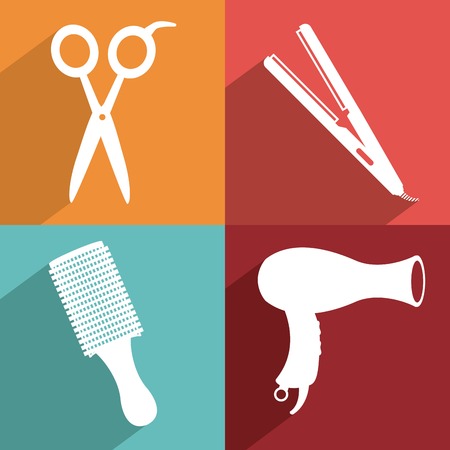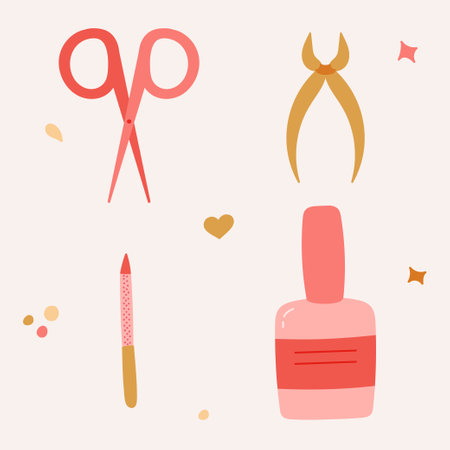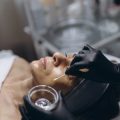Introduction: Unpacking British Beauty Ideals
When we think about beauty standards in Britain, it’s easy to assume that trends are simply a result of fleeting fashion or celebrity influence. However, the truth runs much deeper. In the UK, the concept of beauty is intricately linked to national identity, shaped by centuries of history, shifting social attitudes, and even class distinctions. As you explore what it means to be considered “beautiful” in modern Britain, you’ll soon discover that these ideals reflect far more than just appearances—they reveal the stories and values woven into British society itself. From the iconic pale complexions celebrated during the Elizabethan era to today’s embrace of natural features and diversity, each evolution in British beauty tells us something profound about who Britons are and how they see themselves. Understanding these layers not only helps us appreciate current trends but also empowers us to redefine beauty on our own terms with confidence and kindness.
2. A Glimpse Into the Past: Historical Influences on British Beauty
Understanding today’s British beauty standards requires a thoughtful look back at the historical milestones that have shaped them. Each era brought its own ideals, often reflecting the social and political climate of the time. Let’s explore how key periods in British history influenced what was considered beautiful—and why those echoes still linger.
The Victorian Era: Modesty and Refinement
During the 19th century, Queen Victoria’s reign set the tone for beauty with an emphasis on modesty, pale skin, and delicate features. Women aspired to a demure elegance; cosmetics were frowned upon, reserved mainly for actresses or those on society’s fringes. The ‘English Rose’—rosy cheeks, soft eyes, and natural beauty—became an enduring symbol.
Post-War Britain: Practicality Meets Glamour
After World War II, rationing and austerity shifted priorities. Resourcefulness became attractive, but so did newfound access to Hollywood glamour. Women like Audrey Hepburn and Elizabeth Taylor inspired a polished yet approachable look—soft waves, red lips, and defined brows. This blend of practicality and aspiration helped redefine femininity for a new era.
The Swinging Sixties: Youthquake and Individualism
The 1960s saw a dramatic break from tradition. London became the epicentre of fashion innovation, with icons like Twiggy redefining beauty through bold eye makeup, short haircuts, and androgynous style. The youth-driven “mod” movement championed experimentation and self-expression, making individuality fashionable for the first time.
Evolution of British Beauty Standards by Era
| Era | Main Influences | Defining Features |
|---|---|---|
| Victorian | Royalty, Modesty | Pale skin, subtle blush, natural hair |
| Post-War | Austerity, Hollywood | Polished hair, red lips, practical style |
| Swinging Sixties | Youth Culture, Pop Art | Bold eyes, short haircuts, playful looks |
A Lasting Legacy
The evolution of British beauty is a journey from conformity to creativity—from tightly held norms to vibrant self-expression. These shifts not only reflect changes in aesthetics but also deeper transformations in attitudes towards identity and empowerment. As we move forward in this exploration, keep in mind how these historic moments continue to subtly influence what it means to be beautiful in Britain today.

3. Class, Empire, and Diversity: Social Dynamics at Play
The evolution of British beauty standards cannot be separated from the country’s deep-rooted social hierarchies and complex history. For centuries, class divisions played a decisive role in shaping ideals of attractiveness. Historically, fair skin and delicate features were favoured among the upper classes, symbolising wealth, leisure, and freedom from outdoor labour. This class-based ideal set a precedent that persisted well into the twentieth century, subtly reinforcing who was considered ‘beautiful’ and why.
Britain’s imperial past also left an indelible mark on its beauty culture. As the British Empire expanded across continents, it absorbed and appropriated aesthetic influences from Asia, Africa, and beyond—often through a colonial lens that prioritised Eurocentric features. At the same time, the presence of people from colonised regions introduced new standards and practices into British society, though these were frequently marginalised or exoticised rather than celebrated.
In recent decades, increasing multiculturalism has begun to challenge and enrich traditional norms. The growing visibility of diverse communities in Britain—particularly in urban centres like London, Birmingham, and Manchester—has broadened perceptions of beauty. More Britons are embracing varied skin tones, hair textures, and body types as part of their national identity. While these changes are promising, remnants of older ideals remain; navigating this blend of tradition and diversity can be both liberating and complex for individuals seeking to define their own sense of beauty.
Ultimately, today’s British beauty trends reflect an ongoing negotiation between inherited social structures and the dynamic realities of a modern, multicultural nation. Understanding this context empowers us to appreciate not only where our standards come from but also how we might reshape them moving forward.
4. Modern British Beauty: Contemporary Trends and Media Influence
The face of modern British beauty is shaped by a dynamic mix of traditional values and the undeniable power of today’s media landscape. While history set the foundation, it is now the influence of British media outlets, celebrity culture, and social platforms that actively define and evolve contemporary beauty standards. Let’s take a closer look at how each element plays its part in this ongoing transformation.
The Impact of British Media
British magazines, television programmes, and advertising campaigns have long dictated what is considered beautiful. Mainstream publications such as Vogue UK and The Guardian’s lifestyle section feature models and celebrities who often reflect both classic elegance and the current appetite for diversity. Popular TV shows like “Love Island” or “Strictly Come Dancing” introduce new aesthetics—from bronzed tans to natural minimalism—directly into living rooms across the country, influencing viewers’ perceptions on what looks are deemed attractive or aspirational.
Celebrity Culture: Setting the Standards
British celebrities, from icons like Kate Moss to present-day influencers such as Maya Jama or Florence Pugh, consistently shape trends with their public appearances and personal brands. These figures not only impact fashion but also set examples for skincare, hair styles, body image, and makeup choices. The following table illustrates how different aspects of beauty are influenced by various sources:
Beauty Aspect |
Traditional Media Influence |
Celebrity Influence |
Social Media Influence |
|---|---|---|---|
| Makeup Trends | Magazine editorials | Red carpet looks | Tutorials on TikTok/Instagram |
| Body Image | TV adverts, soap operas | Fitness routines shared online | #BodyPositivity campaigns |
| Hairstyles | Fashion spreads, commercials | Signature cuts/styles (e.g., bob by Alexa Chung) | YouTube transformation videos |
| Skincare Routines | Lifestyle columns, product endorsements | Personal endorsements (e.g., Charlotte Tilbury) | Influencer product reviews |
The Social Media Revolution
No discussion of modern British beauty would be complete without acknowledging the influence of platforms like Instagram, TikTok, and YouTube. Social media democratises beauty standards by allowing everyday individuals to become trendsetters themselves. Viral challenges (#SoapBrow or #Skinimalism), influencer collaborations with homegrown brands, and real-time feedback loops mean that beauty trends can emerge overnight and shift rapidly. Furthermore, these platforms encourage inclusivity—championing all skin tones, body types, and gender expressions—thus broadening the national conversation around what ‘British beauty’ truly means.
The Interplay Between Past and Present Influences
The current landscape is a fascinating blend: while echoes of historical ideals persist—such as an appreciation for understated elegance or fair skin—the power held by media personalities and digital creators has enabled a more diverse spectrum of beauty to flourish in Britain today. As you navigate these influences, remember: true confidence comes from self-acceptance first, using trends as inspiration rather than strict rules.
5. Redefining Beauty: Inclusion and Representation
In recent years, British beauty standards have been challenged and reshaped by a wave of movements that celebrate diversity and inclusion. Historically, the UKs mainstream ideals often centred around narrow definitions—fair skin, slim figures, and Eurocentric features were widely promoted in media and advertising. However, as society grows more aware of its rich multicultural makeup and the importance of authentic representation, these traditional notions are being re-examined and broadened.
The Power of Visibility
Campaigns such as Body Positivity and Love Island’s diverse casting choices have played pivotal roles in shifting perceptions. High street brands now feature models of various body shapes, ethnic backgrounds, and ages. Social media influencers from all walks of life—whether they wear hijabs, have vitiligo, or proudly display their natural hair—are gaining well-deserved recognition. This increased visibility not only empowers individuals but also encourages younger generations to see themselves as beautiful, exactly as they are.
Expanding Gender Expression
The conversation around gender identity is also evolving. Traditional binaries are giving way to a more fluid understanding of gender expression in British fashion, beauty campaigns, and pop culture. Makeup brands like Illamasqua and Superdrug’s own-brand cosmetics actively support gender inclusivity by featuring non-binary and transgender models in their adverts. These steps help dismantle outdated stereotypes and foster an environment where everyone feels welcome to explore their identity without fear or shame.
A Gentle Reminder
While progress has been made, it’s important to remember that changing deep-rooted standards takes time. By continuing to champion inclusive representation—not just in marketing but also behind the scenes—we can build a more compassionate and realistic definition of beauty for all who call Britain home. True confidence comes from recognising that beauty is not about fitting a mould, but about celebrating what makes each person unique.
6. Conclusion: Looking Forward
Reflecting on the historical and social roots of British beauty standards is not just an academic exercise; it’s a powerful tool for personal growth and collective change. By recognising how ideals have been shaped—often subtly—by centuries of tradition, class dynamics, and evolving media, we can begin to challenge narrow definitions of beauty that may have once felt inescapable. Understanding these origins empowers us to question why certain features or looks are considered desirable, and more importantly, frees us to celebrate the full spectrum of individuality that modern Britain truly embodies.
When we acknowledge the influence of both history and society on our perceptions, we create space for a broader and richer appreciation of beauty. It’s an invitation to rewrite the narrative—to see value in diversity, authenticity, and confidence rather than conformity. Whether you’re navigating beauty expectations in London, Manchester, or Edinburgh, knowing where these ideals come from can help you approach them with curiosity instead of criticism.
Ultimately, embracing this awareness encourages a more inclusive self-image—not just for ourselves, but for those around us. As British society continues to evolve, let’s champion confidence rooted in self-acceptance and kindness. After all, true beauty isn’t dictated by fleeting trends or long-standing traditions; it flourishes when each person feels seen, valued, and empowered to be unapologetically themselves.


